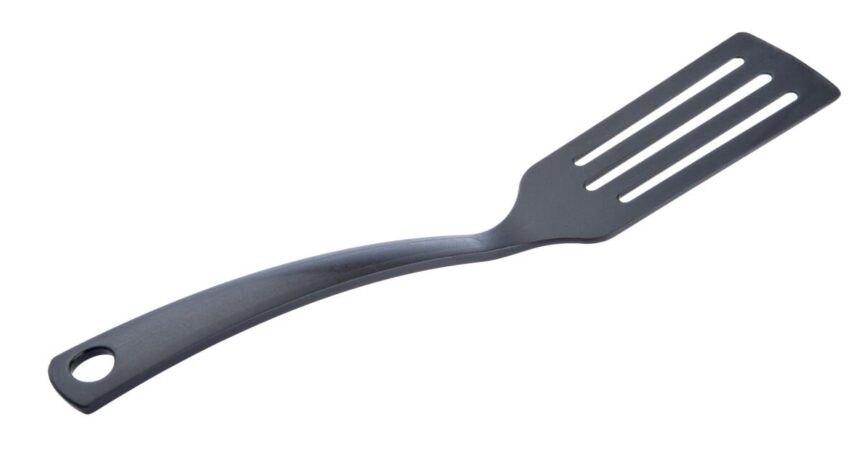Go to the kitchen, take the black spatula and throw it in the trash. Straight away.
That’s the alarming message from a new study published in the journal Chemosphere. Cooking with any plastic utensils has long been a concern because heat can cause chemicals in the plastic to transfer to the food you’re eating. But researchers now say that products made from recycled black plastic contain more toxic components.
The authors of the Chemosphere study found that everyday household items made from black recycled plastic, including kitchen utensils, take out containers, toys and hair accessories, have a high probability of containing high levels of flame retardants and other toxic chemicals.
Flame retardants enter the most commonly used items because these black-colored products are made from recycled electronic waste, such as discarded television sets and computers, which often contain additives.
As with other plastic cookware, when you use a black plastic spatula while flipping pancakes, the heat can push the flame retardant to leach out of the flipper and into your flapjacks.
“It is because flame retardants are not properly bound to the plastic polymer that is added, it is an additive. And heat can easily migrate chemicals out of the product,” said Megan Liu, co-author of the study and science and policy manager for Toxic-Free Future.
The poison is not in every black item – for example, you won’t find it in a black spatula made of silicone. Nor is it in every black plastic item. The problem is, you can’t tell which plastic is harmful and which isn’t.
Why get rid of them now?
If you look at the black plastic product and think, “I’ve been using it for a long time and I’m OK,” Liu said this product is playing the long game.
Cooking every day with black plastic products can lead to an increase in toxic chemicals over time.
Playing with black plastic may be more dangerous for young children, whose bodies are still developing.
Lui said studies show that toxic chemicals can leach from children’s toys and into their saliva if they put them in their mouths.
“It’s really worrying when you think about flame retardants, because they are known to bioaccumulate in our bodies,” he said.
Experts agree, there is no safe level of exposure to these flames.
These accumulations can cause a variety of health problems, including the risk of cancer, hormone disruption, effects on fertility and damage to the brain and nervous system.
How do you know if a product is dangerous?
It is almost impossible to tell if a black plastic product is contaminated. This is because products that include recycled e-waste do not disclose a detailed list of all ingredients and contaminants in the product.
Liu said it is also not clear what type of flame retardant is in this black plastic product.
Some of the products the researchers tested in the new study “contain up to nine hazardous chemicals and hazardous flame retardants,” he said.
What can you do about it?
Experts advise consumers to avoid buying black plastic cookware or other products if possible. If you already have some products in your kitchen or home, they suggest you throw them away.
There are many restaurants that place orders in black plastic containers. If you get one of these containers, don’t use it to reheat food or leftovers – transfer the food to a glass or ceramic container.
“Sushi trays have the highest levels of (a) flame retardant called deca-BDE (Decabromodiphenyl ether), which is a real concern because it has been banned from the US” for years, Liu said.
The United States Environmental Protection Agency banned the use of deca-BDE in 2021 after the chemical was linked to cancer, endocrine and thyroid problems, and various other diseases.
What are the safer alternatives?
The safest nontoxic material choices for kitchen appliances are wood and stainless steel.




